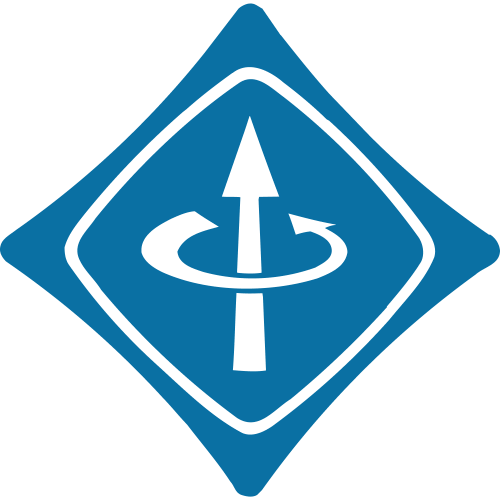,
volume 17
,
issue 2
,
pages 393-402
Automatic detection of attachment sites for knee ligaments and tendons on CT images
Publication type: Journal Article
Publication date: 2021-11-13
scimago Q2
wos Q2
SJR: 0.658
CiteScore: 5.4
Impact factor: 2.3
ISSN: 18616410, 18616429
PubMed ID:
34773571
Computer Science Applications
General Medicine
Computer Graphics and Computer-Aided Design
Biomedical Engineering
Surgery
Computer Vision and Pattern Recognition
Health Informatics
Radiology, Nuclear Medicine and imaging
Abstract
Purpose The diseases and injuries of the knee joint are the most common orthopedic disorders. Personalized knee models can be helpful in the process of early intervention and lasting treatment techniques development. Fully automatic reconstruction of knee joint anatomical structures from medical images (CT, MRI, ultrasound) remains a challenge. For this reason, most of state-of-the-art knee joint models contain simplifications such as representation of muscles and ligaments as line segments connecting two points which replace attachment areas. The paper presents algorithms for automatic detection of such points on knee CT images. Methods This paper presents three approaches to automatic detection of ligaments and tendons attachment sites on the patients CT images: qualitative anatomical descriptions, analysis of bones curvature, and quantitative anatomical descriptions. Combinations of these approaches result in new automatic detection algorithms. Each algorithm exploits anatomical peculiarities of each attachment site, e.g., bone curvature and number of other attachments in a neighborhood of the site. Results The experimental dataset consisted of 26 anonymized CT sequences containing right and left knee joints in different resolutions. The proposed algorithms take into account bone surface curvatures and spatial differences in locations of medial and lateral parts of both knees. The algorithms for detection of quadriceps femoris, popliteus, biceps femoris tendons, and lateral collateral and medial collateral ligaments attachment sites are provided, as well as examples of their application. Two algorithms are validated by comparison with known statistics of ligaments lengths and also using ground truth annotations for anatomical landmarks approved by clinical experts. Conclusions The algorithms simplify generation of patient-specific knee joint models demanded in personalized biomechanical models. The algorithms in the current implementation have two important limitations. First, the correctness of the produced results depends on the bones segmentation quality. Second, the presented algorithms detect a point of the attachment site, which is not necessarily its center. Therefore, manual correction of the attachment site location may be required for attachments with relatively large area.
Found
Nothing found, try to update filter.
Found
Nothing found, try to update filter.
Top-30
Journals
|
1
|
|
|
IEEE Transactions on Medical Imaging
1 publication, 33.33%
|
|
|
International journal of computer assisted radiology and surgery
1 publication, 33.33%
|
|
|
1
|
Publishers
|
1
2
|
|
|
Institute of Electrical and Electronics Engineers (IEEE)
2 publications, 66.67%
|
|
|
Springer Nature
1 publication, 33.33%
|
|
|
1
2
|
- We do not take into account publications without a DOI.
- Statistics recalculated weekly.
Are you a researcher?
Create a profile to get free access to personal recommendations for colleagues and new articles.
Metrics
3
Total citations:
3
Citations from 2025:
0
Cite this
GOST |
RIS |
BibTex |
MLA
Cite this
GOST
Copy
Yurova A. et al. Automatic detection of attachment sites for knee ligaments and tendons on CT images // International journal of computer assisted radiology and surgery. 2021. Vol. 17. No. 2. pp. 393-402.
GOST all authors (up to 50)
Copy
Yurova A., Salamatova V., Lychagin A., Vassilevski Y. Automatic detection of attachment sites for knee ligaments and tendons on CT images // International journal of computer assisted radiology and surgery. 2021. Vol. 17. No. 2. pp. 393-402.
Cite this
RIS
Copy
TY - JOUR
DO - 10.1007/s11548-021-02527-6
UR - https://doi.org/10.1007/s11548-021-02527-6
TI - Automatic detection of attachment sites for knee ligaments and tendons on CT images
T2 - International journal of computer assisted radiology and surgery
AU - Yurova, Alexandra
AU - Salamatova, Victoria
AU - Lychagin, Alexey
AU - Vassilevski, Yuri
PY - 2021
DA - 2021/11/13
PB - Springer Nature
SP - 393-402
IS - 2
VL - 17
PMID - 34773571
SN - 1861-6410
SN - 1861-6429
ER -
Cite this
BibTex (up to 50 authors)
Copy
@article{2021_Yurova,
author = {Alexandra Yurova and Victoria Salamatova and Alexey Lychagin and Yuri Vassilevski},
title = {Automatic detection of attachment sites for knee ligaments and tendons on CT images},
journal = {International journal of computer assisted radiology and surgery},
year = {2021},
volume = {17},
publisher = {Springer Nature},
month = {nov},
url = {https://doi.org/10.1007/s11548-021-02527-6},
number = {2},
pages = {393--402},
doi = {10.1007/s11548-021-02527-6}
}
Cite this
MLA
Copy
Yurova, Alexandra, et al. “Automatic detection of attachment sites for knee ligaments and tendons on CT images.” International journal of computer assisted radiology and surgery, vol. 17, no. 2, Nov. 2021, pp. 393-402. https://doi.org/10.1007/s11548-021-02527-6.
Profiles



